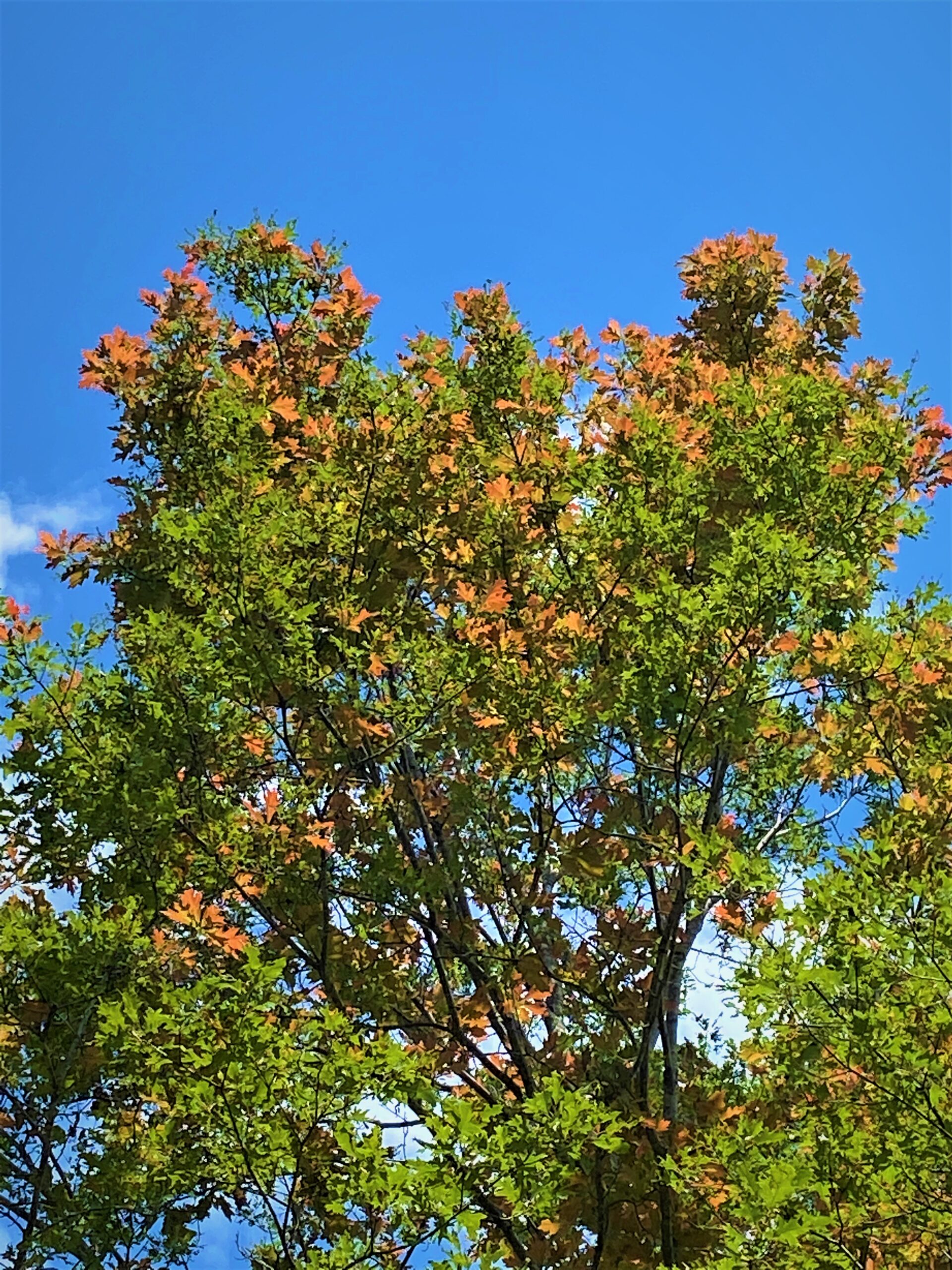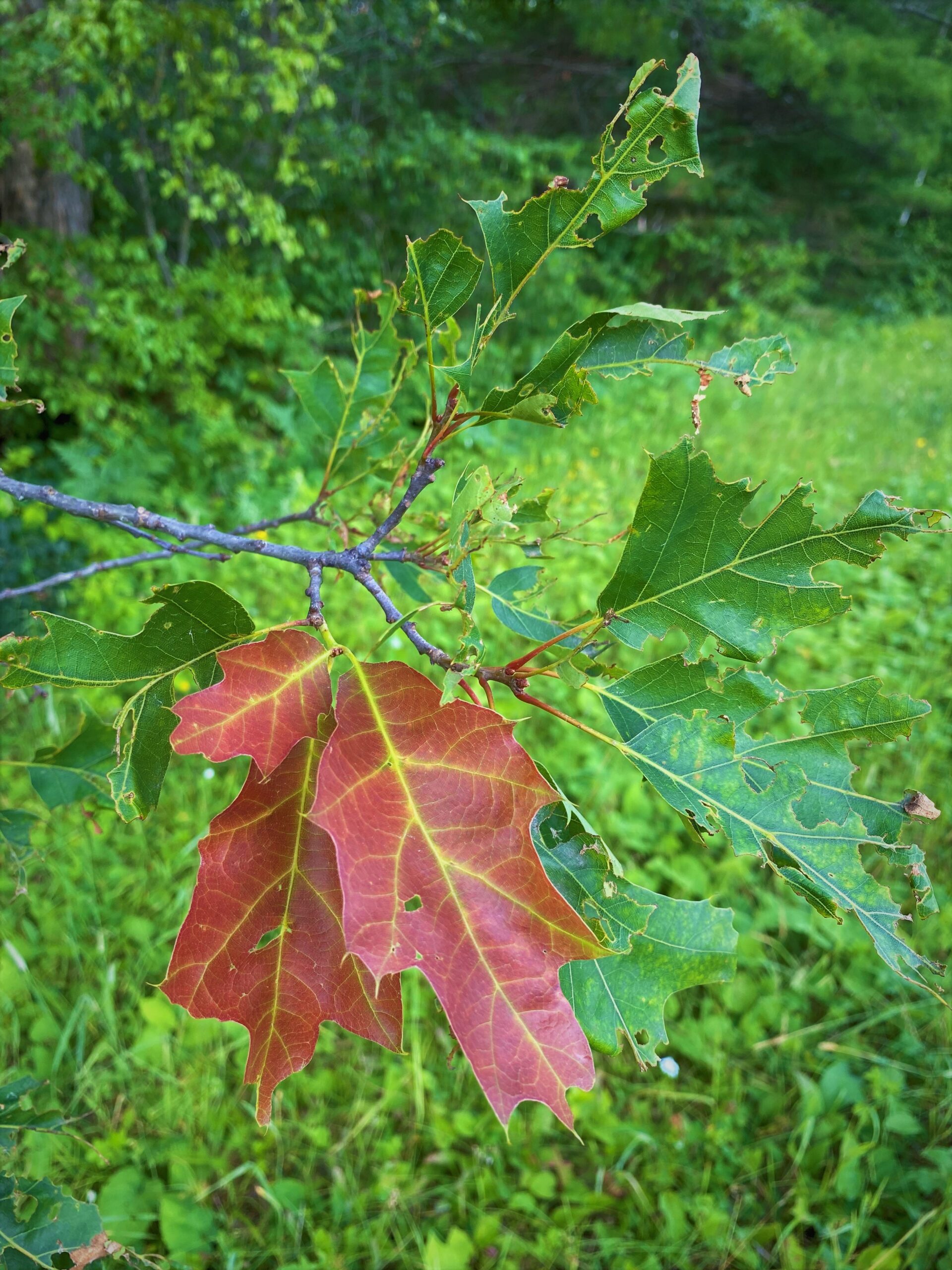By Paul Cigan, DNR Forest Health Specialist, Hayward, paul.cigan@wisconsin.gov or 715-416-4920
Red oak trees in many areas of northern Wisconsin are aptly fitting their name as many crowns exhibit a red hue this summer.

Red oaks are producing a second flush of leaves following oak leafroller defoliation in spring, resulting in trees with red-looking crowns. Photo: Wisconsin DNR
Widespread defoliation by oak leafrollers in May and June has led many oaks to generate a second set of leaves after being stripped. New expanding leaves often display a prominent red color that gives the tree crown a stark reddish appearance from afar.

The red coloration in young leaves is caused by the sun light reflecting red color from a group of foliar pigments called anthocyanins. Anthocyanins benefit vulnerable, young leaves by reducing damage from intense sunlight and being less attractive and tasty to insect herbivores. Photo: Wisconsin DNR
The red foliage is commonly mistaken as an oak wilt infection or symptom of stress. Although the production of a second leaf flush will tax the oaks’ energy reserves and lead to short-term stress, it is a normal response to herbivory and nothing to be too concerned about.
High concentrations of a group of foliar color pigments called anthocyanins are mostly responsible for the red coloration of new leaves. Interestingly, elevated concentrations of foliar anthocyanins provide several benefits to developing leaves. Foliage emerging in summer often faces heavy exposure to direct sunlight, which can cause cellular damage to leaf tissues. The reddish hue reflected by foliar anthocyanins acts as a photoprotectant, or a kind of sunscreen, reducing the impact of otherwise damaging doses of direct sunlight.
Perhaps more fascinating is how the red coloration may also deter roving insect predators. Red-colored anthocyanins act like camouflage for foliage, making leaves appear black in the eye of an insect and thereby harder to locate. If the hide-and-seek strategy happens to fail, anthocyanins also make young red leaves less palatable.
Thus, this year’s midsummer red isn’t just red oaks living up to their venerable name, but also the work of a crafty evolutionary serum used to protect against the intense summer sun and hungry defoliators.
